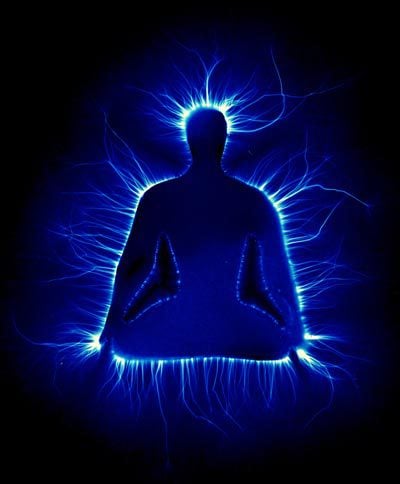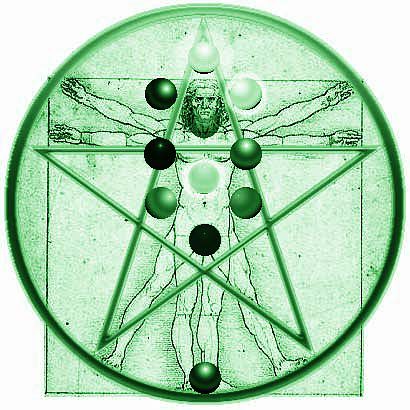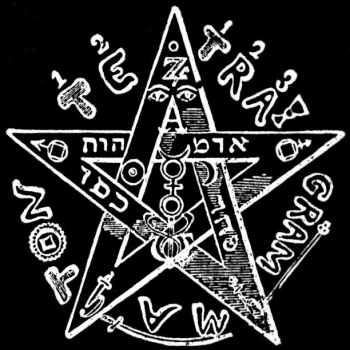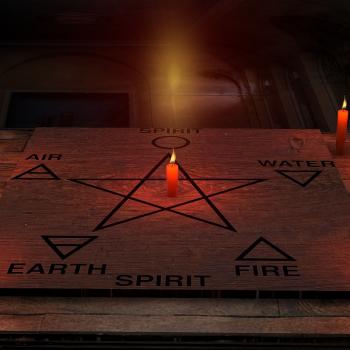Mind, body, and spirit; these are ideas we take for granted. Yet, in our culture, the understanding of these concepts is relatively undeveloped. This is not a Paganism problem; it is a Western problem. Though, truth be told, Paganism and the New Age seem to have a more nuanced and developed understanding of these concepts (and their interactions) than most anyone else in the West.
Here in the West, we are enamored of the mind. We believe it is through the mind that we control ourselves and our lives. The everyday mind is considered the sum total of the self and the locus of thinking, knowledge, and identity. Such as view is, to the experienced practitioner, desperately naive. To mix metaphors with abandon, anyone who has been “down the rabbit hole” understands that the everyday mind is just the tip of the iceberg.
Practice and Knowledge
On the whole, Pagans have a deeper-than-average understanding of the depth and breadth of the human experience. Whether we have developed a lot of control or just have a little, we quickly come to understand that the everyday mind is only part of who we are. But that does not mean that everything we believe about our nature is true.

In Pagan worldviews, our understanding of the spirit is often not just practical, but practice-based. We learn, though practice and training, how to alter our state in complex ways so that we can achieve our goals.
As practitioners, our understanding of the spirit is much like an athlete’s knowledge of the body. That is, we know how to make it do what we need it to do. We can even make it do incredible things. But that is not the same as understanding the spirit on its own terms.
A healer’s knowledge of the spirit is different from the average Pagan’s. Where the magician is like a spiritual athlete, able to accomplish things, a healer is like a spiritual doctor, able to understand how the systems interrelate and how to bring them back into harmony.
Spiritual Anatomy
I have been a healer for a long time. One of my areas of study, which has fascinated me for about a quarter of a century, is spiritual anatomy.
Spiritual anatomy is not just about examining and understanding the relationships between the parts of the spirit. Spiritual anatomy also studies the interactions of the various parts: spirit and body, the spirit and mind, the mind and body, all of these pieces with the soul, and then each of these parts as they connect outward to the larger universe.
Understanding the whole human, including not just the mind, body, spirit, and soul, but each of the systems that govern and regulate the interactions, is the study of a lifetime — my lifetime, specifically. And while all of that will not fit into one blog, I would like to address is a casual mistake I made a couple of posts back.
When talking about “how magic works” I referred to a person’s “state” as their current way of holding the mind, body, and spirit. But the way that comes together in English, it makes them seem like three independent things. This is not true.
Have you ever wondered how to reconcile the mind-body-spirit with the physical/spiritual dualism? Well, no, probably not.

But I’ll bet that, if you do magical and religious stuff, you’ve probably wondered about whether the spirit or body is more important. Are we naturally biological creatures who think we have a spirit, or creatures of the spirit who happen to be having a biological day?
In asking this question, we are giving ourselves a false choice. It is like asking whether your right or left leg is “more important.” One might be dominant, but both are necessary to walk.
The Everyday Mind
So let me lay this right out: the “mind” that we experience all the time, arises from the interaction of the body and spirit. That incessant voice inside us, that self-talks and seems to determine our focus and mood? It is not actually in charge. The everyday mind is, in fact, the least powerful bit in the system of self. It has as barely more effect on out state than barometer does on the weather.
However, in the everyday world, our mind can successfully direct us. Most of the time, we are only dealing with situations that we already understand. We spend most of our life in known situations. Our everyday mind is about perfect for getting us through our workday, navigating the grocery store, and dealing with traffic (as long as nothing goes wrong).
But when something goes wrong we are unprepared. We are lost when matters of life and death intrude. We find, suddenly, that we have turned our mind into something that hardly recognizes let alone represents our deepest nature.

Where we get into trouble is when we start acting like the everyday mind is actually running the show. The everyday mind tell us that it is brilliant and perceptive and will take care of things. Realistically, it has a very narrow view of the world and is really talented at distinguishing things that we think we like from things we do not.
The deeper parts of ourselves have access to different information. If we were to chunk it up, we can imagine the body’s knowledge as “animal wisdom” – not in the sense of anthropomorphizing other animals, but in the sense of recognizing our own animal nature. Further, we can come to understand that the human spirit is every bit as much a “spirit” as any other.
The Everyday Mind Defends Itself
For most people, that is the point where the mind will generally jump in and start asking awkward questions like, “well, then, where to do the spirit and body come from?” “how do you know this?” and so on and so forth.
But, no. Let’s stay where we are. Because if we just stick with this idea, we can explain a lot of our troubles in life. When we put the mind in charge of ourselves, it’s like letting the kid decide where we’re going to go for dinner. And letting them drive. And expecting them to pay for it. This is why our lives feel out of control so much of the time.
This is why I have spent so much time and effort on this blog exhorting people toward self-cultivation. Yes, I know it’s a pain in the ass. It can be boring and seems “easy.” I also know it is hard enough we want to avoid it. But it is also the path forward.
Mind, Body, Spirit
The everyday mind is more or less powerless on its own. When we treat it like it is in charge, we dis-empower and disconnect from our deeper selves. Our culture teaches us to use the everyday mind this way because weak people work together better. In the wider perspective, society works better when we need each other. But we need to find a balance that takes care of our needs, too.
A common Eastern approach, meditative in nature, is to dissolve that mind so that a deeper self arises. To do this, we starve the mind of attention until it breaks into its component parts.

The Western path is, instead, to purify the everyday mind. This is something of a trick. No matter what type of “purification” it is, it teaches the lesson that the everyday mind is not truly in charge.
Though the results of these two techniques look different in the everyday world, both paths both can bring out a more authentic self. Controlling the everyday mind can only be done by seeking deeper parts of the self.
Self-cultivation means developing relationships with both the body and the spirit. Neither one or the other can be in overwhelming control. Only when the two are harmonized can we open the way to the sacred.
















